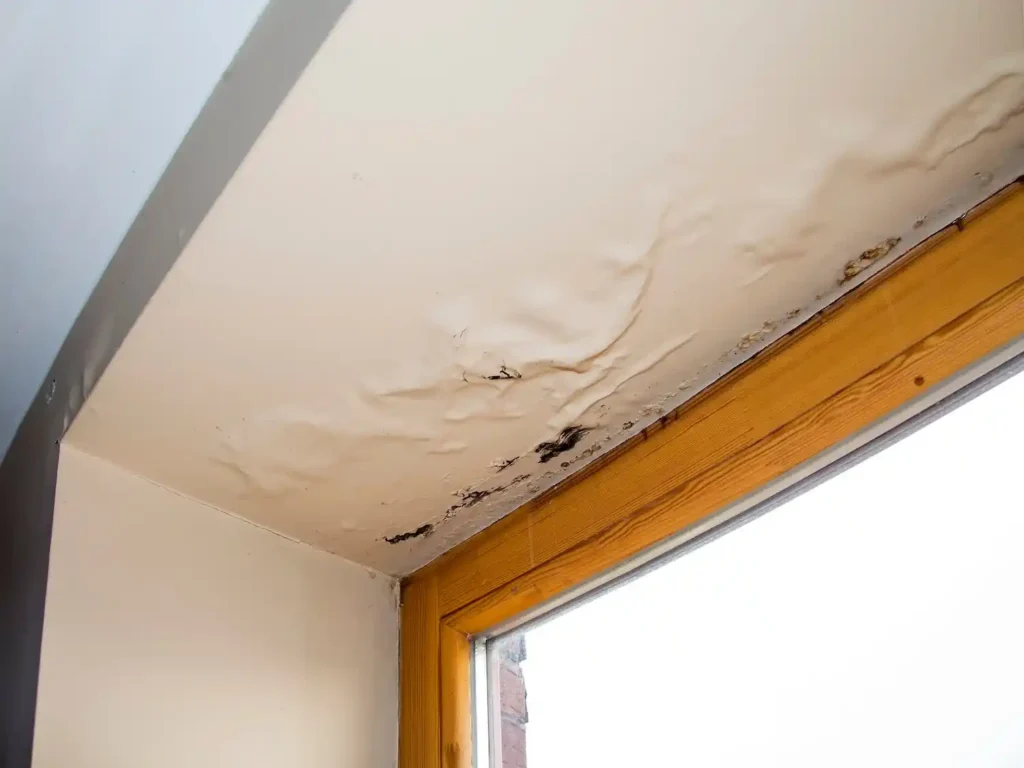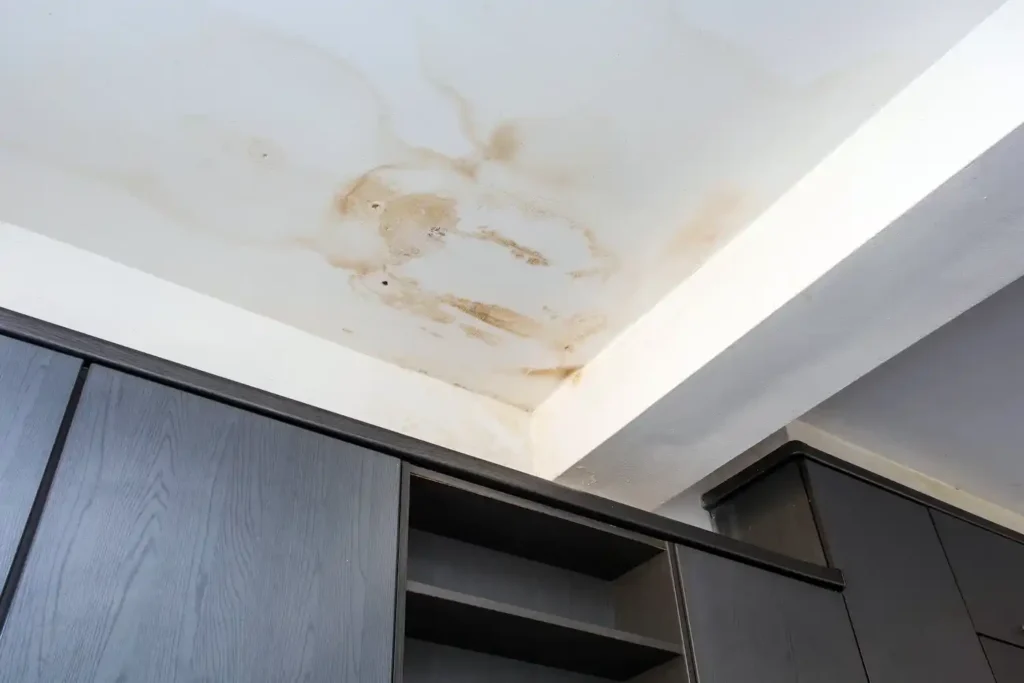According to the National Roof Certification and Inspection Association (NRCIA), homeowners should have their roofs inspected at least once per year. An annual inspection can ensure there is no damage and that your roof is in tip-top shape to protect you and your family.
But when we think of a roof inspection, we often only consider the exterior portion of the roof. Far too often, we overlook the fact that our roofs can suffer from interior damage as well. A roof may look great from the outside, but interior signs of roof damage can indicate problems.
So, what do interior signs of roof damage look for? Keep reading to learn more.
MOLD OR MILDEW
Finding mold or mildew in your ceilings or attic can indicate roof damage. Even if your roof looks okay from the outside, the presence of mold or mildew means that the area has been exposed to both moisture and heat.
Moisture can get into your attic and ceilings through loose, missing, or cracked shingles. You may not notice cracked shingles right away, which can allow for moisture from water or rain to seep under the shingles and pass through tiny crevices.
When this moisture goes unnoticed, it can create a breeding ground for mold. Mold also thrives in humid environments. Poorly insulated attics often have high humidity levels, which can encourage mold growth.
Mold can spread quickly, causing damage to your roof, ceilings, and other parts of your home. It can also be a serious health risk, causing issues like inflammation and congestion.
Spotting mold or mildew in your attic or ceiling is a sure interior sign of roof damage.
HIGHER UTILITY BILLS
After living in a house for a year, it’s usually pretty easy to predict your utility bills every month. Your use of air conditioning and heat is generally the same for the respective seasons, meaning there should be no surprises.
But if you see a sudden spike in your utility bill, you might have a serious problem on your hands.
Higher energy bills typically means that your home is having an issue with climate control. If heat is escaping your home from one or more points, your heater has to work hard to regulate the temperature.
A sudden spike in costs could be an internal sign that there’s damage to your roof. Even small gaps and crevices in your home’s roof and insulation can cause warm or cool air to escape and let seasonal weather in.
If your energy bills are suddenly higher than expected, it’s a good sign you should get your roof checked out by a professional roofer.
COSMETIC ISSUES
Certain physical signs inside of your home can indicate that you have an issue with your roofing material. A home with roof damage will often succumb to leaks and moisture, which can seep through drywall and cause your paint to peel.
Peeling paint, particularly on your ceilings and the top portions of your walls, can mean that there’s trouble with a roof leak.
Additionally, moisture can create stains on your ceilings. You’re more likely to see these rippled spots if you have light-colored ceilings.
Though these signs seem purely cosmetic, they point to a larger problem: moisture is entering your home from above. The most likely cause of this moisture is a leaking roof.
STRUCTURAL DAMAGE
If you have an attic that you use, whether as an extra room or storage, it’s much easier to see the structural layer of your roof. Most pitched roofs use ceiling wall framing, ceiling joists, rafters, and support beams to hold them in place – all of which you can see from the inside of your attic.
If you can get up into your attic, you will easily be able to spot interior signs of roof damage through these structural pieces.
Moisture and water leaks can create severe structural damage to these components, which are made of wood. Water can cause the wood to rot, which weakens the overall framing of your roof. In severe cases, a weakened frame can collapse and destroy a roof while potentially causing other damage to your home.
Before a collapse happens, you can look for signs of damaged roof structures. Look for dark spots on the joints, softened wood, and cracks. It’s critical to have any of these signs checked out by a professional before they become more serious.
OTHER INTERIOR SIGNS OF ROOF DAMAGE

It’s just as important to keep an eye on the interior of your roof as it is to inspect the exterior of your roof. Aside from the signs listed above, there are other interior signs of roof damage you should keep an eye out for. These signs include:
- Light passing through the attic ceiling
- Puddles on the floor
- Visible drips from the attic ceiling
- Increased humidity levels inside
- Sagging attic ceilings
Check your ceilings or attic space at least twice a year for any of these interior signs of roof leaks or damage. Catching a problem early on will save you time, money, and safety risks.
FINAL THOUGHTS
Roof damage is no joke. It is easy enough to make our roofing materials an afterthought, but if you’re checking the exterior of your roof, you should also be checking the interior. These inside signs can indicate roof damage that you may not have otherwise noticed.
Be sure to schedule a roof inspection at least once per year. Most people like to have a professional roof inspector come out before the cold and rainy season begins to avoid any delays in potential repairs.
When you schedule an inspection, be sure to ask about interior inspections as well. While many roofing companies offer a free roof inspection, some companies only perform exterior inspections. You can inquire about an inspection on the inside of your home as well.
Remember, your roof is your home’s first line of defense, so don’t take its upkeep for granted. Look for signs of damage and get your annual inspection done by a professional.



![4 Interior Signs Of Roof Damage To Watch For [Pictures]](https://mars-roofing.com/wp-content/uploads/2022/10/4-Interior-Signs-Of-Roof-Damage-To-Watch-For-Pictures.webp)
